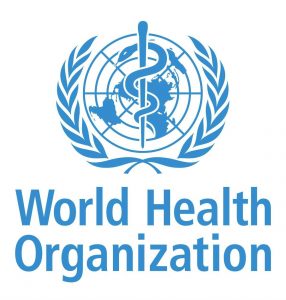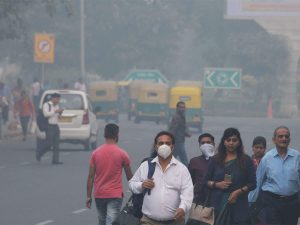Today Current Affairs: 19th October 2021 for UPSC IAS exams, State PSC exams, SSC CGL, State SSC, RRB, Railways, Banking Exam & IBPS, etc
Table of Contents
Exercise Yudh Abhyas And Exercise Mitra Shakti:

Exercise Yudh Abhyas
- The 17th Indo-US Joint Military Exercise “Ex Yudh Abhyas 2021” was held at Joint Base Elmendorf-Richardson in Alaska (US).
- In February 2021, the previous version of the exercise was held in Bikaner’s Mahajan Field Firing Ranges (Rajasthan).
- It is the largest running joint military training and defence cooperation endeavor between India and the US.
- The exercise was started in 2004 under the US Army Pacific Partnership Program. The exercise is hosted alternately between both countries.
- The exercise aims at enhancing understanding, cooperation and interoperability between two Armies.
- This will help them in undertaking joint operations at battalion level in mountainous terrain with cold climatic conditions under the ambit of the United Nations.
Exercise Mitra Shakti:
- The 8th Edition of joint military exercise between the Indian Army and the Sri Lankan Army, Exercise MITRA SHAKTI was conducted in Sri Lanka.
- The 7th edition of the Mitra Shakti exercise was held in Pune, Maharashtra in 2019.
- It is based on counter insurgency and counter terrorism operations in semi urban terrain.
- It is the largest bilateral exercise being undertaken by the Sri Lankan Army and it forms a major part of India and Sri Lanka’s growing defence partnership.
- The joint exercise is designed for incorporating the current dynamics of United Nations’ peacekeeping operations through tactical exercises and practical discussions.
China Tested A Nuclear-Capable Hypersonic Glide Vehicle:

It has been reported that China tested a nuclear-capable hypersonic glide vehicle that circled the globe before speeding towards its target.
- Several countries, including the US, Russia and China, are developing hypersonic missiles which travel at a speed five times that of sound.
- Though slower than ballistic missiles, they are harder to intercept and can be manoeuvred.
- Hypersonic technology developments, in the backdrop of growing US-China rivalry and a year-long standoff with Indian forces in eastern Ladakh, is certainly a threat for India’s space assets along with the surface assets.
- The offence system operating at these speeds would mean a requirement to develop defence systems at these speeds.
Hypersonic Speed and Technology:
- Hypersonic speeds are 5 or more times the Mach or speed of sound.
- It describes an aircraft’s speed compared with the speed of sound in air, with Mach 1 equating to the speed of sound i.e. 343 metre per second.
- Hypersonic cruise missiles: These are the ones that use rocket or jet propellant through their flight and are regarded as being just faster versions of existing cruise missiles.
- Hypersonic Glide Vehicle (HGV): These missiles first go up into the atmosphere on a conventional rocket before being launched towards their target
- Technology Used: Most hypersonic vehicles primarily use the scramjet technology, which is a type of Air Breathing propulsion System.
- This is extremely complex technology, which also needs to be able to handle high temperatures, making the hypersonic systems extremely costly.
World Energy Outlook Report 2021: IEA

The International Energy Agency (IEA) released the World Energy Outlook (WEO) Report 2021.
- Published every year, the WEO provides critical analysis and insights on trends in energy demand and supply.
- The 2021 report signaled pressure on governments to push for greater climate action at the Conference of Parties (COP26) summit (in Glasgow, UK).
- Earlier, IEA also released its Net Zero Emissions (NZE) Roadmap – named ‘Net Zero by 2050’.
- Renewable energy sources, such as solar, wind, hydropower and bioenergy, need to form a far bigger share in the rebound in energy investment after the coronavirus pandemic.
- World is not investing enough to meet future energy needs, and the uncertainties are setting the stage for a volatile period ahead.
- Demand for renewables continues to grow. However, this clean energy progress is still far too slow to put global emissions into sustained decline towards net zero by 2050, which the IEA believes will help limit the increase in global temperatures to 1.5 degrees Celsius.
- Initially IEA supported continued investment in fossil fuels. However it has gradually moved toward a “more distinct tone urging decision makers to mitigate climate change”.
- The extra investment might not be as difficult as it sounds. More than 40% of the required emissions reductions would come from measures that pay for themselves, such as:
- Improving efficiency, limiting gas leakage, or installing wind or solar in places where they are now the most competitive electricity generation technologies.
Global Hunger Index 2021:

Global Hunger Index 2021 has been released.
Performance of India:
- India has slipped seven places to rank 101 among 116 countries. The level of hunger in India was ‘serious’ according to the report.
It ranked fourth among South Asian countries. - Only 15 other countries ranked below India on the Index.
- Bangladesh (76), Nepal (76) and Pakistan (92) have fared much better than India on the index.
- In 2020, India ranked at 94 among 107 countries on the Index.
- India’s score on the Index in the recent two decades has declined by 10 points.
- Globally, India ranked among the worst in ‘child wasting’ or ‘weight for height’. Its performance was worse than Djibouti and Somalia.
The Global Hunger Index (GHI) is published annually as part of a partnership between Concern Worldwide, Ireland’s largest aid and humanitarian agency and Welthungerhilfe.
- The first GHI report was published in 2006.
- The GHI is intended to be “a tool designed to comprehensively measure and track hunger at global, regional, and national levels”.
The Global TB report:

The Global TB report has been released by the World Health Organization (WHO).
Key findings:
- The world suffered huge reverses in progress towards tuberculosis (TB) elimination in 2020, thanks to the novel coronavirus disease (COVID-19) pandemic.
- The biggest impact was felt in terms of detection of new cases.
- This means a large number of cases went undetected due to highly curtailed access to diagnostics and restrictions imposed to contain the pandemic.
- From 2016-2019, the number of new cases rose continuously, but fell dramatically to 20 per cent in 2020.
- The big global drop in notifications of TB cases in 2020, as compared with 2019, means that the gap between the number of people who actually got the disease and the new people who got diagnosed “widened substantially” in 2020.
- The report estimated that gap to be around 4.1 million cases.
- India contributed the biggest drop in detection of new cases. Some 41 per cent of the total number of cases that dropped in 2020, as compared to 2019, came from India. Thus, a large chunk of TB cases went missing in the country.
- The biggest fallout of the decline in notification of new cases is that it has resulted in an increase in TB deaths. TB was ranked the 13th leading cause of death globally till 2019. Thanks to huge setbacks, it is now estimated to be the second leading cause, only after COVID-19.
- The ‘End TB Strategy’ milestones for reductions in TB disease burden by 2020 were a 35 per cent reduction in the number of TB deaths. Instead, the global reduction in the corresponding time period has only been 9.2 per cent.
TB is an infectious disease caused by the bacillus Mycobacterium tuberculosis.
- It typically affects the lungs (pulmonary TB) but can also affect other sites.
- The disease is spread when people who are sick with pulmonary TB expel bacteria into the air, for example by coughing.
COP26 Climate Conference:

The UK will host the COP 26 UN Climate Change Conference from October 31 to November 12.
- This year marks the 26th Conference of Parties (thus the name COP26) and will be held in the Scottish Event Campus in Glasgow.
- COP comes under the United Nations Climate Change Framework Convention (UNFCCC) which was formed in 1994.
- The UNFCCC was established to work towards “stabilisation of greenhouse gas concentrations in the atmosphere.”
- COP members have been meeting every year since 1995 (COP1 was held in 1995 in Berlin).
- It laid out a list of responsibilities for the member states which included:
- Formulating measures to mitigate climate change.
- Cooperating in preparing for adaptation to the impact of climate change.
- Promoting education, training and public awareness related to climate change.
- According to the UNFCCC, COP26 will work towards four goals:
- Secure global net-zero by mid-century and keep 1.5 degrees within reach.
- Adapt to protect communities and natural habitats.
- Mobilise finance: To deliver on our first two goals, developed countries must make good on their promise to mobilise at least $100bn in climate finance per year by 2020.
- ‘Finalise the Paris Rulebook’: Leaders will work together to frame a list of detailed rules that will help fulfil the Paris Agreement.




